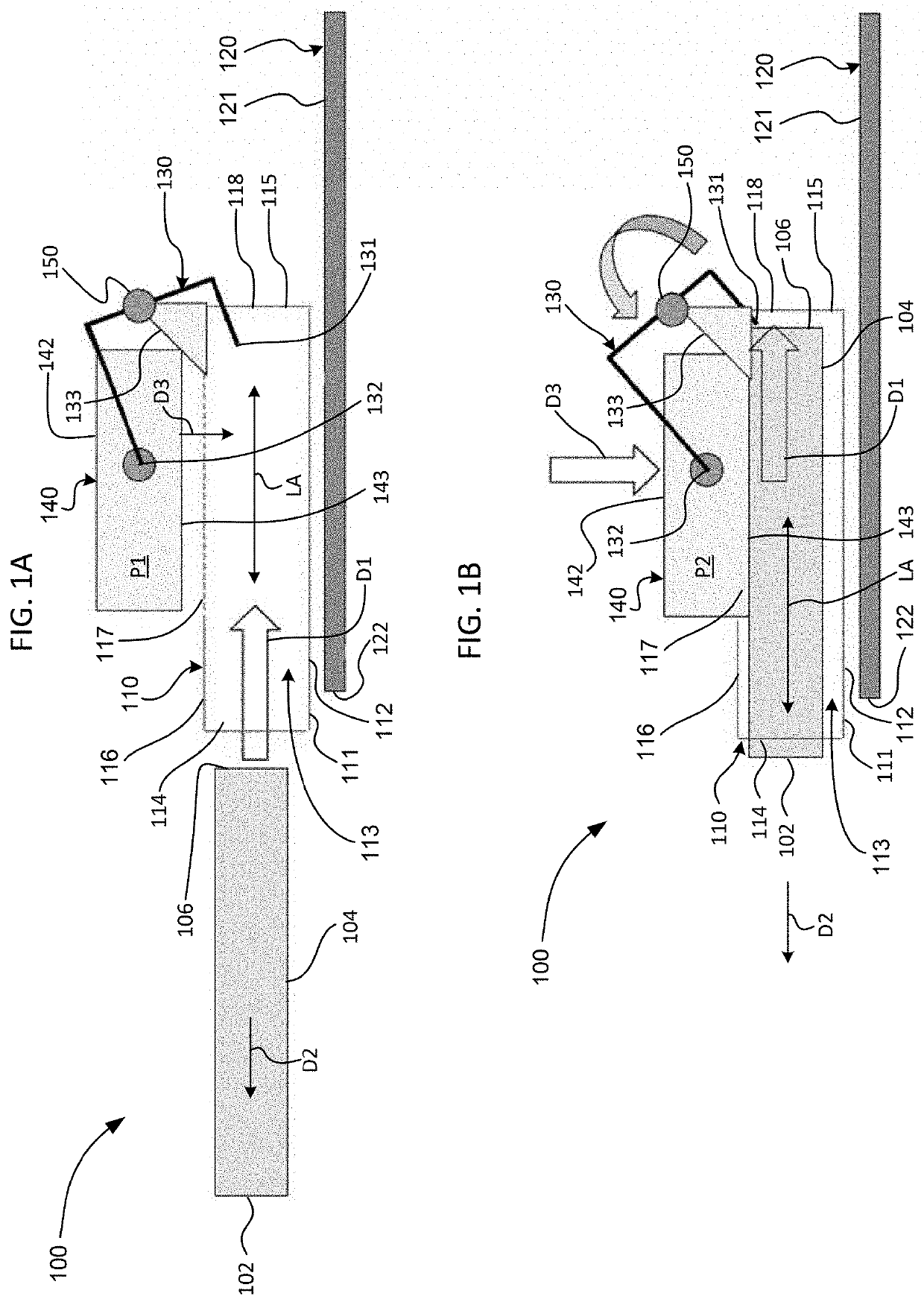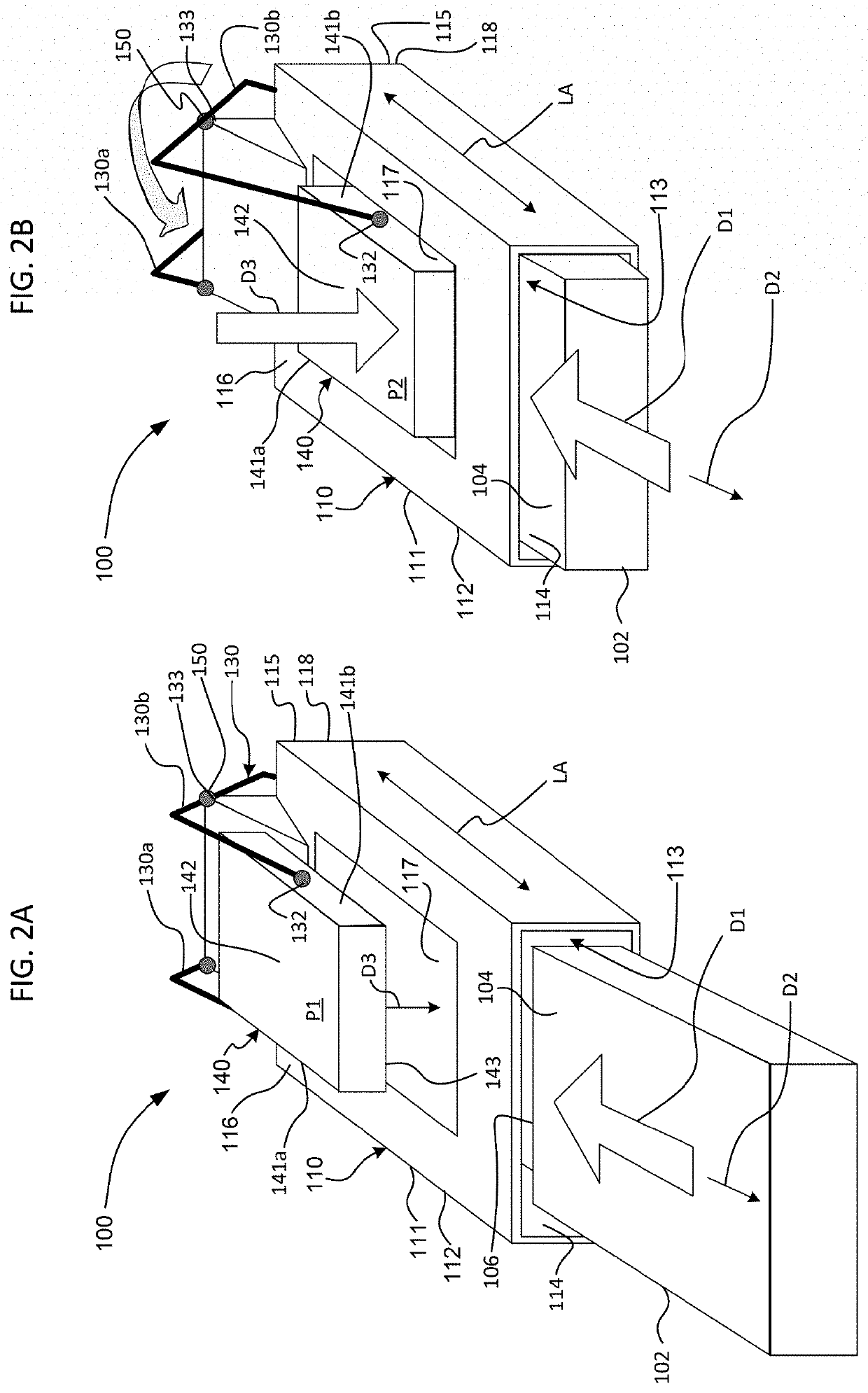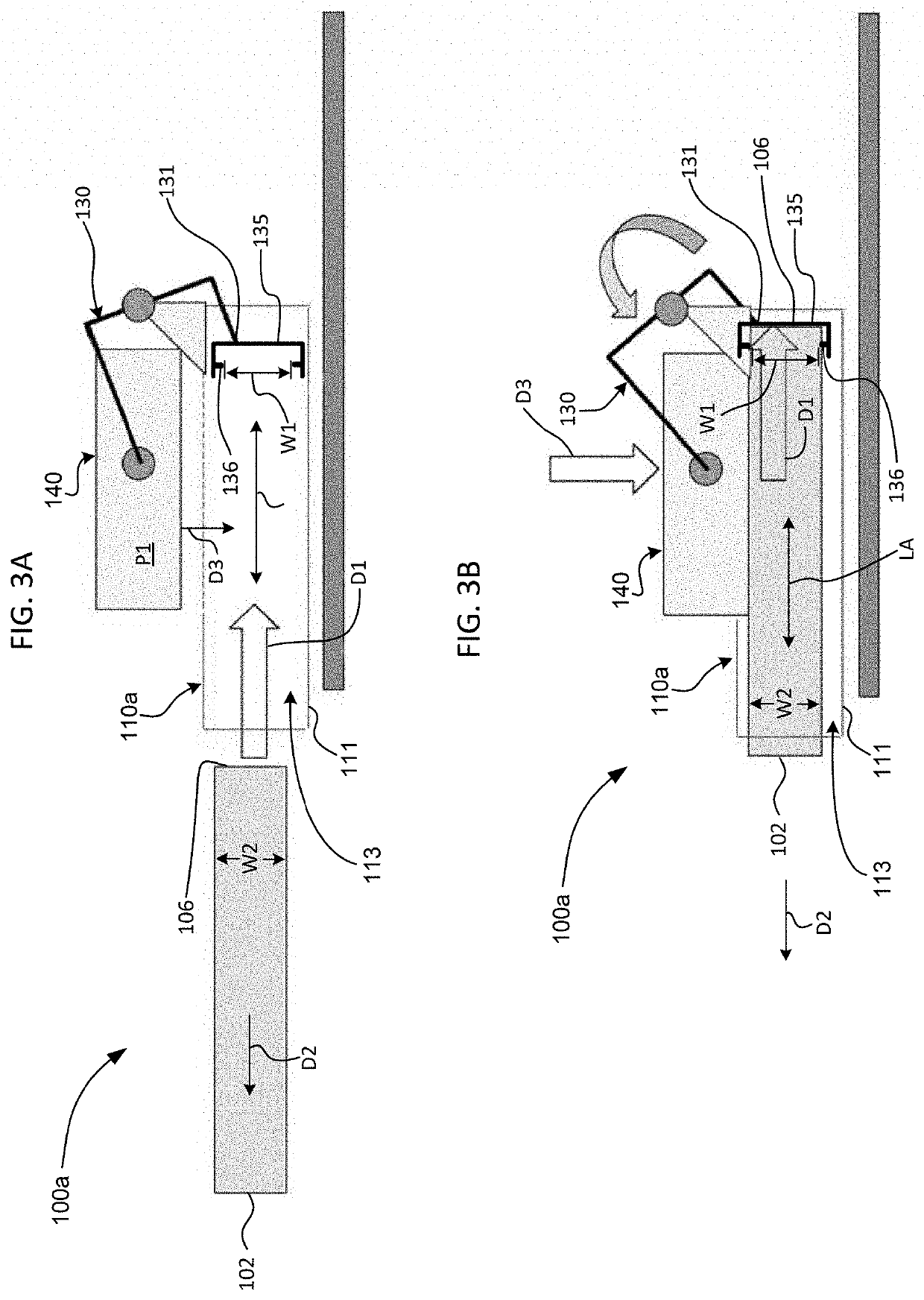Blind mate thermal cooling solution for small form factor pluggable transceiver
a plug-in transceiver and thermal cooling technology, applied in the cage field, can solve the problems of poor heat rejection of fins within a standard module form factor, poor thermal conduction path between heatsinks and modules, and current cooling solutions that cannot permit doubled power consumption
- Summary
- Abstract
- Description
- Claims
- Application Information
AI Technical Summary
Benefits of technology
Problems solved by technology
Method used
Image
Examples
Embodiment Construction
[0018]The technology relates generally to a cage configured to removably receive a module, such as a small form factor high power pluggable transceiver, and a method for removably inserting such a module into a cage. For example, and as illustrated in FIGS. 1A through 2B, a system 100 may include a cage 110 and a circuit panel 120. A frame 111 of the cage 110 may be fixedly mounted to a major surface 121 of the circuit panel 120 at a peripheral edge 122 thereof. The cage 110 may be configured to removably receive a module 102 therein.
[0019]The module 102 may be a small form factor high power pluggable transceiver, which may be an optical module that has a high thermal load compared to conventional optical modules. The power consumption of such an optical module may require almost double the power consumption of a conventional optical module while maintaining the same exterior form factor.
[0020]The frame 111 of the cage 110 may include a plurality of panels 112 joined to one another,...
PUM
 Login to View More
Login to View More Abstract
Description
Claims
Application Information
 Login to View More
Login to View More - R&D
- Intellectual Property
- Life Sciences
- Materials
- Tech Scout
- Unparalleled Data Quality
- Higher Quality Content
- 60% Fewer Hallucinations
Browse by: Latest US Patents, China's latest patents, Technical Efficacy Thesaurus, Application Domain, Technology Topic, Popular Technical Reports.
© 2025 PatSnap. All rights reserved.Legal|Privacy policy|Modern Slavery Act Transparency Statement|Sitemap|About US| Contact US: help@patsnap.com



